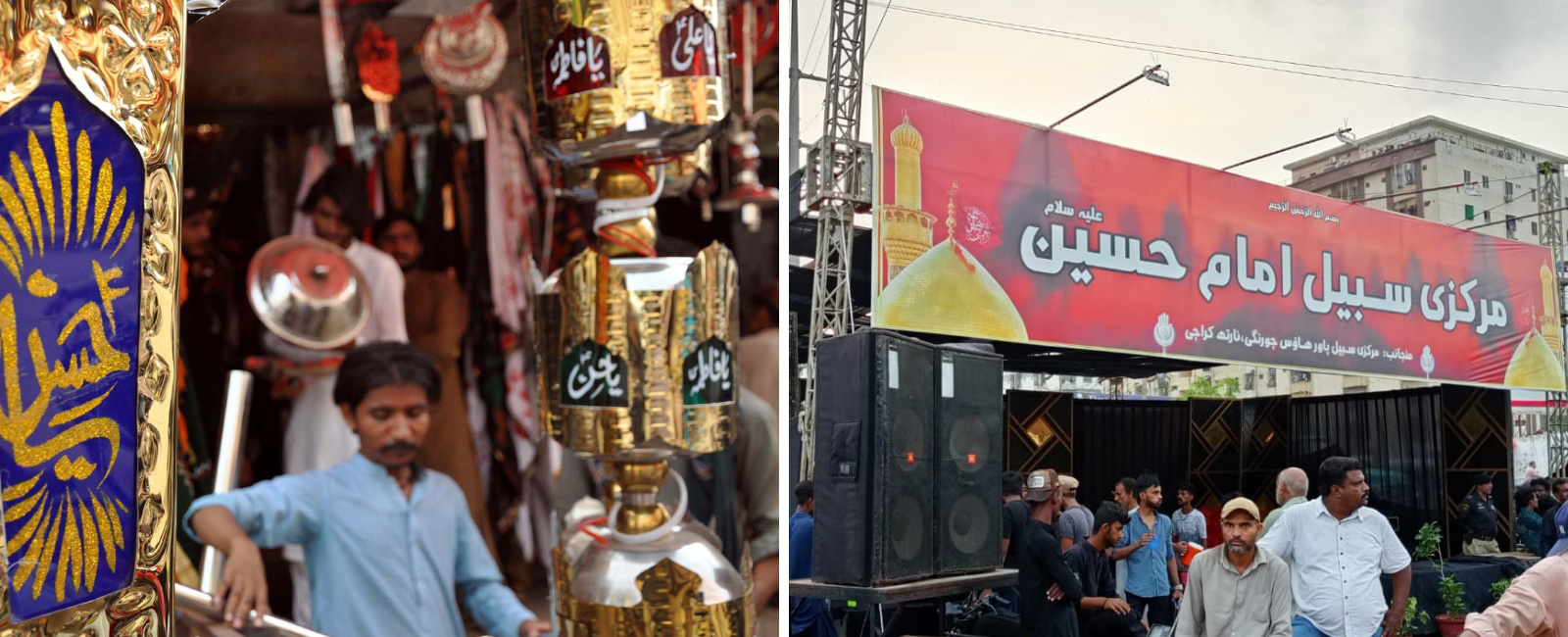From catering to hospitality, how Muharram observances boost economy
Economic activity generated during these times not only sustains related businesses but also underpins broader economic growth

On a hot sunny day in the bustling neighbourhood of Ancholi, Karachi, Hameed Ahmed is busy stirring large pots of Haleem, a type of stew, in his small, open-air kitchen.
The rich aroma of slow-cooked wheat, meat, and lentils in a medley of spices wafts through the air, drawing a steady stream of customers eager to secure their share of this savoury dish.
Hameed's haleem is particularly in demand during Muharram, the first month of the Islamic calendar, when religious observances and rituals bring people together in mourning and solidarity.
Contrary to the widespread belief that the economy suffers because of roadblocks and holidays, the streets in Pakistan transform with increased economic activity centred around religious observances.
According to rough estimates, tens of billions are spent on different rituals of the mourning — majalis (annual mourning gatherings), mourning processions, security, upkeep of imambargahs (worship place), procession routes and ziaraat (religious pilgrimages), and last but not least the langar (free meals).
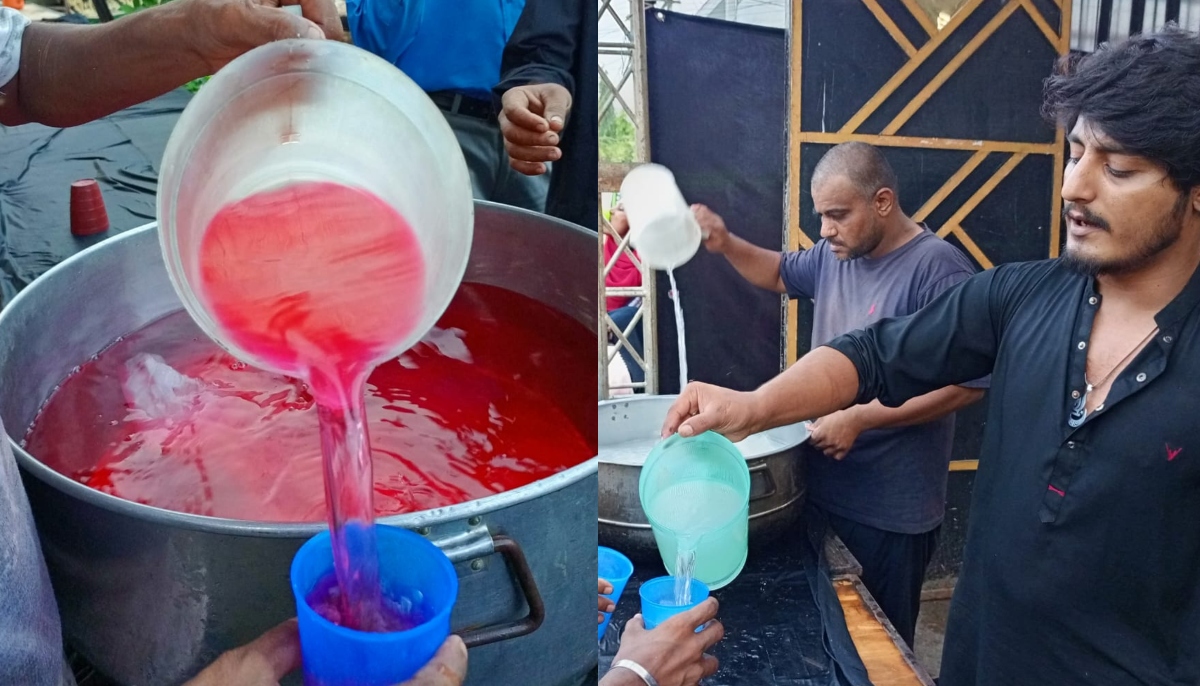
Mazhar Abbas, a decorator based in Karachi, told Geo.tv that the business flourishes in Muharram. “During the first 12 days of Muharram, tents are used for sabil (a small makeshift setup where water is freely dispensed to the public) while after the 12th Muharram demand for tents and crockery increases as people host majalis at home,” he explained.
“Usually, people take four kanats (tents), two tubs, two jugs, six tables and some chairs for a sabil,” he revealed adding, “The per day rent of this is Rs3,000 and if they take speakers it would cost them Rs2,500 per day.”
Moreover, during Muharram, especially in the areas including Saddar, Kharadar, Ranchor Line, and Soldier Bazaar, toy carts are set up. The kids are spoilt for choice while buying wooden swords, bows and arrows, swings, horse carriages, mini dhols, and much more — all intricately decorated with paints, fur, and chamak patti.
Settled on the streets, the toy carts, mostly owned by families of gypsies, who have been associated with the business for generations, bring joy to young children during a time of grief and mourning.
Retail and hospitality sectors: A seasonal boom
According to Vaqar Ahmed, Joint Executive Director at the Sustainable Development Policy Institute, “First and foremost, particularly for Muharram-related activities, religious tourism can be seen as people throng to cities or their villages where they prefer to observe Muharram with their loved ones.” This influx of people stimulates local economies, with sectors such as food processing and retail experiencing a notable uptick.
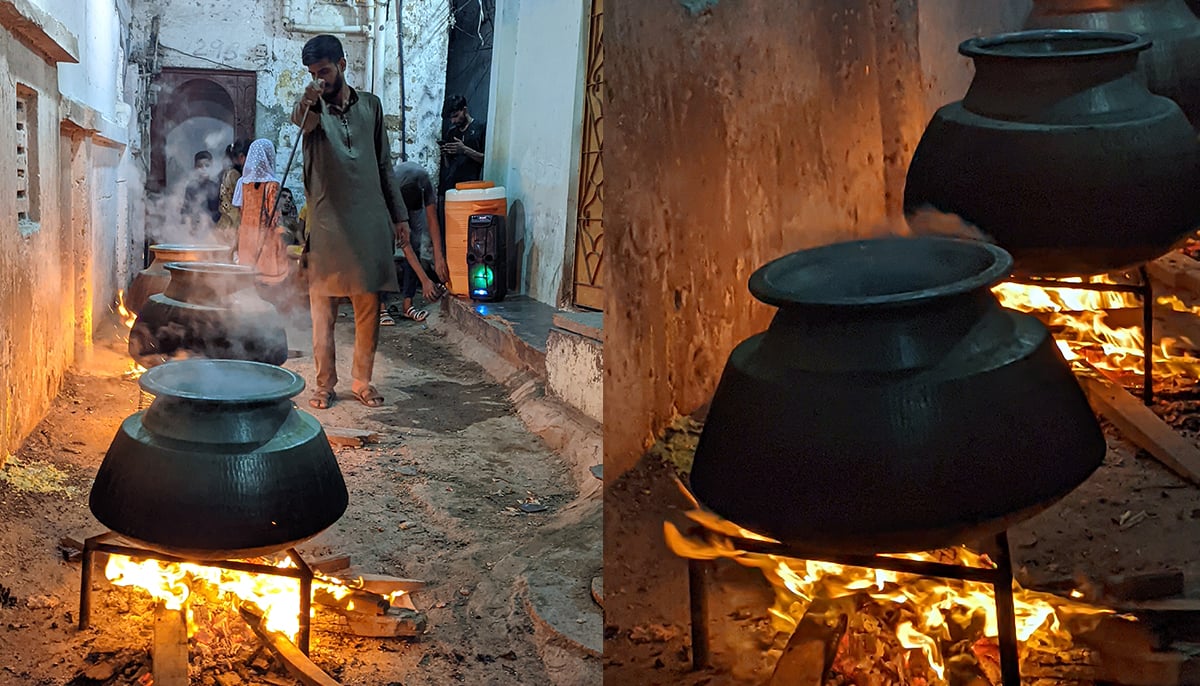
Hameed’s haleem shop is a testament to this seasonal economic boom. Despite the solemnity of the month, business is brisk. The demand for haleem, sheermal (a milky, mildly sweet, soft bread), sherbet, tabarrukat (religious gifts), etc spikes as people prepare to host majalis and serve food to mourners. The preparation and distribution of food during Muharram is not just a cultural tradition but also a means of fulfilling religious duties, which naturally drives the demand for food supplies.
This increased demand has a ripple effect throughout the economy. As Vaqar noted: "The agro and food processing industry, including food supply and farming, receives a ready stimulus at the backend. On the front end, the agro and food retail industry, along with the wholesale and retail sectors, also benefit. Additionally, the transport sector gains as people need to travel to places where they collectively observe their religious duties.”
These interconnected sectors create a web of economic activity that supports jobs and promotes growth.
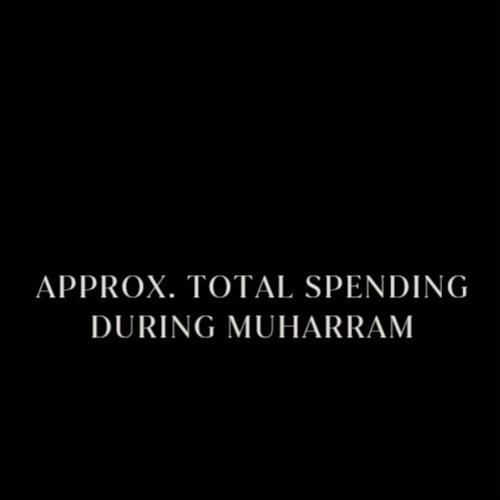
During Muharram, textile sales also see a significant increase as people commemorate the events of Muharram, especially Ashura, by wearing specific traditional and religious attire. Additionally, special coloured garments are required for religious rituals and mourning activities, further driving up sales. Retailers and textile manufacturers frequently prepare for this surge by stocking up on specific coloured fabrics, traditional clothing, and black garments, which are commonly worn during Muharram.
Ahsan Mehanti, MD and CEO of Arif Habib Limited, provided additional insight into the broader impact of Muharram on the economy while speaking to Geo.tv. "Business activity is generally impacted by religious holidays, but some sectors also boom during that time," he explained.
"The retail and hospitality sectors receive a boost during the month of Muharram due to common religious commitments, leading to increased spending on the distribution of food, juices, and water for both worldly rewards and the hereafter."
Mehanti also highlighted the need for better organisation and security measures to prevent tragedies like stampedes and other incidents of violence during processions. He suggested that officially organised cultural processions could enhance tourism and support philanthropic projects in religious education, health, and livelihood.
For Hameed, the hustle and bustle of Muharram is a familiar and welcome sight. It’s a time when his hard work pays off, and he plays a small yet significant role in the community's observance of this sacred month.
Rs700 billion spending
The economic activity generated during this time not only sustains businesses like his but also underpins broader economic growth. As Khurram Schehzad, CEO of Alpha Beta Core, aptly puts it, saying, "Muharram is the first month of the Islamic calendar. Like any religious event or month, it also brings economic activity across the economy and helps improve spending, in turn leading to an uptick in economic growth, especially in the early parts of this holy month."
He listed some aspects which help stimulate economic growth, these include:
— Muharram-related activities, like buying food, clothing, and other items for processions and events, can stimulate economic growth.
— It's a common practice for people to show generosity by donating to those in need during this period.
— The economic impact extends beyond monetary transactions, as vendors experience increased demand for cooking services and essential items like ghee, rice, and sugar for religious offerings.
— Muharram brings significant economic benefits to Pakistan, attracting both local and international tourists who participate in events, supporting small businesses and larger establishments.
— The influx of visitors boosts economic activity, benefiting a range of enterprises, from small food vendors to larger businesses, resulting in a substantial economic impact.
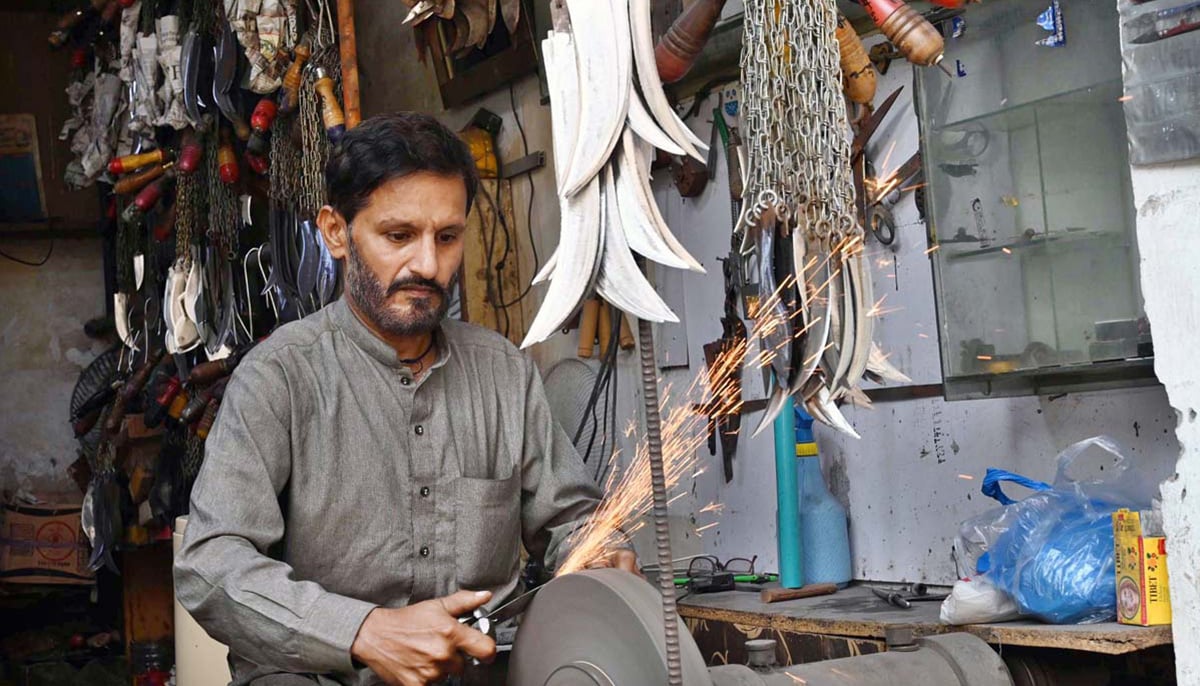
Schehzad, citing a report, mentioned that the total spending during Muharram reaches a substantial Rs700 billion. "Considering inflation, individuals may invest over Rs1.5 million in arrangements like lighting, sound systems, security, repairs, and daily food provisions. Additionally, zakirs, who lead religious recitals, receive compensation ranging from Rs300,000 to 500,000," he added.
Indeed, the economic dimensions of Muharram in Pakistan reflect a complex interplay of tradition, religion, and commerce. As people like Hameed work tirelessly to meet the needs of their customers, they also strengthen a larger economic narrative that underscores the enduring connection between faith and livelihood.
Back in Anchcoli, as the sun begins its descent over Karachi’s skyline, Hameed ladles out yet another serving of haleem, his face reflecting both exhaustion and contentment. For him and countless others across Pakistan, Muharram is not just a month of solemnity but also a time of economic vitality and community cohesion.
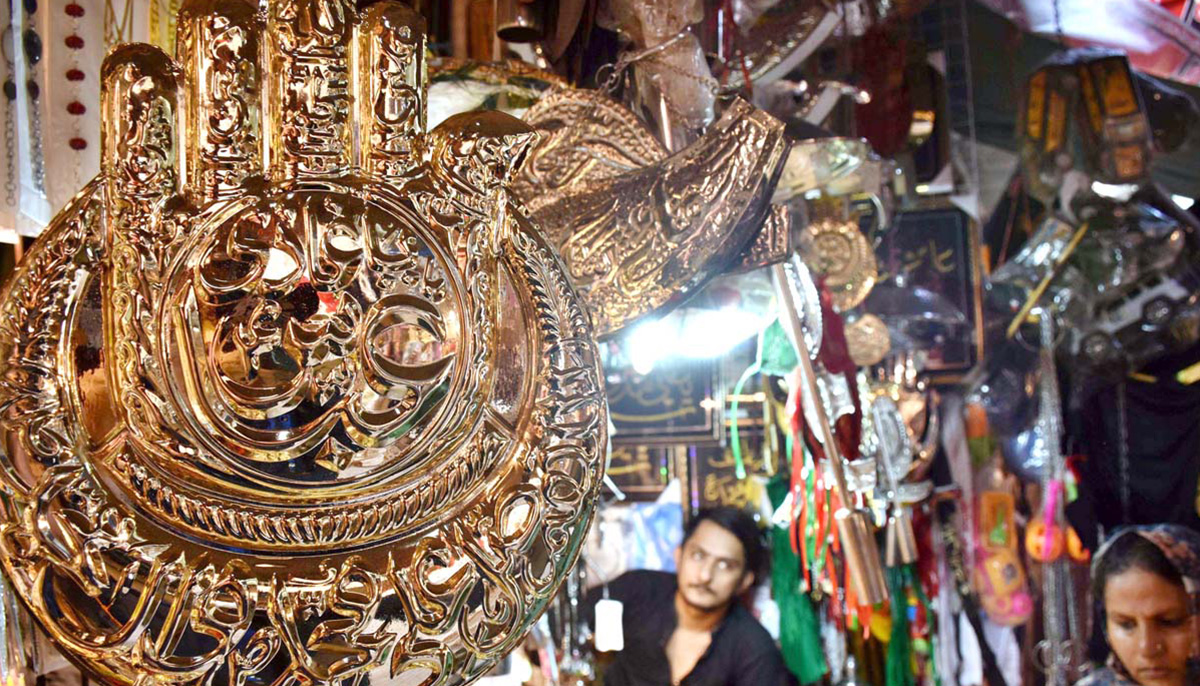
However, Schehzad mentioned that when the entire country is closed for two days (when they fall during the week). The country and its economy need to stay opened with better security so both the objectives can be met i.e. more economy activity while performing religious duties.
"Better security and more and more peaceful processions and better-managed majalis and all sorts of givings be more structured. It will become even more benefitial for the economy and markets," he concluded.
As the country prepares to embark on this annual period of reflection and remembrance, the economic pulse quickens, driven by traditions that bind communities together and uplift sectors from agriculture to hospitality. In these moments of shared grief and collective generosity, Pakistan finds both spiritual solace and economic opportunity, reminding its people of the enduring intersections between belief and subsistence.
In Hameed’s small catering house and beyond, the spirit of Muharram persists — stirring pots of haleem and the nation’s economy, one communal meal at a time.
Header image shows a collage of a vendor's shop in Lahore, on July 14, 2024, and a sabeel in Karachi, on July 10, 2024. — APP/Geo.tv via Saad Ahmed
Afreen Mirza is a staffer at Geo.tv



